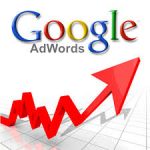
11 Feb Buying Traffic – Make the Most of Your Budget
One of the toughest decisions faced by a business owner is how to get the most impact from a finite marketing budget. There are a myriad of options available, but the most common ones include pay-per-click, social media, and link acquisition. The major difference between each of these is the timing of the impact of the expenditure (immediate versus long-term). These options are not mutually exclusive. Based on the business model and target audience, individually they will range from completely ineffective to very productive. Understanding each of them will help you make the best choice.
Pay-Per-Click
 Google exists because they make money. They will earn nearly $100 billion in 2018! Business owners spend their money with them because they typically get a positive ROI (return on investment). However, many business owners fail to realize these gains and give up. Aside from the campaigns that are poorly managed, many fail simply because their business models are not conducive to using this method. Pay-per-click has an immediate impact on traffic but has virtually no long-term value. When you stop paying, the traffic stops. For this reason it is critical to understand the concept of arbitrage.
Google exists because they make money. They will earn nearly $100 billion in 2018! Business owners spend their money with them because they typically get a positive ROI (return on investment). However, many business owners fail to realize these gains and give up. Aside from the campaigns that are poorly managed, many fail simply because their business models are not conducive to using this method. Pay-per-click has an immediate impact on traffic but has virtually no long-term value. When you stop paying, the traffic stops. For this reason it is critical to understand the concept of arbitrage.
Understanding Arbitrage
Arbitrage, as it pertains to the web, means making more money from your customers (often other advertisers) than it costs to purchase the traffic. If you sell traffic for more than it costs to buy it, arbitrage works. To do this properly you need to be able to carefully measure both the cost and the revenue. This is the single most common point of failure for business owners. If you do not have a good handle on this data, you probably shouldn’t be doing pay-per-click.
Revenue versus Cost
Revenue is measured as RPM (revenue per thousand visits). It is not hard to come up with general number (sufficient for many business owners) buy dividing monthly revenue by the number of visits. It can be further refined by channel (organic, paid, social, email, etc.) by using goals and conversions in Google Analytics.
Cost is measured as CPM (cost per thousand visits) and should be taken directly from the advertising dashboard. If RPM is greater than CPM, the paid effort is viable and should be continually increased until the ROI drops beneath that of other traffic alternatives. Once again, if you do not have a good handle on this data, you probably shouldn’t be doing pay-per-click.
To Pay or Not to Pay
If ROI is negative, then the paid campaign needs to be tweaked or suspended. Some business models are simply not conducive for paid search. Here is a simple example. A publisher who derives revenue by selling impressions is other advertisers is going to have a very low RPM. The publisher is actually competing directly against Google! A service provider or a brand that is targeting that same audience can afford to pay much more per click and that will typically drive the cost of the traffic above the publisher RPM. However, if the publisher can leverage its brand and audience, they could demand a higher price from an advertiser and come up with a positive ROI. The big problem is that service providers have the largest RPM, following by retailers, brands, and finally publishers. The viability of any campaign really comes down to understanding the competition for various phrases and targeting the right ones (if any).
Social Media
 Running an ad campaign on a social media platform such as Facebook, will certainly have a higher CPM than a Google ad campaign. However, the benefits of a properly run social campaign go beyond foot traffic (traditional RPM). Those benefits include both fan and critical inbound link acquisition. It is completely acceptable to have a negative ROI provided there is a reasonable amount of fan acquisition. By measuring the permanent increase in the non-paid component of social media traffic, the campaign manager can determine the cost of fan acquisition. Multiply that by an estimate of monthly views per fan and you can refine the CPM and it should yield an overall positive ROI.
Running an ad campaign on a social media platform such as Facebook, will certainly have a higher CPM than a Google ad campaign. However, the benefits of a properly run social campaign go beyond foot traffic (traditional RPM). Those benefits include both fan and critical inbound link acquisition. It is completely acceptable to have a negative ROI provided there is a reasonable amount of fan acquisition. By measuring the permanent increase in the non-paid component of social media traffic, the campaign manager can determine the cost of fan acquisition. Multiply that by an estimate of monthly views per fan and you can refine the CPM and it should yield an overall positive ROI.
The intangible element is the amount of inbound link acquisition. Social media channels are the best way to market content to other webmasters and influencers. If the content and strategy are good enough, there will be link acquisition. Every link adds to the rank and authority of the site in the eyes of Google. That means better organic search performance. In summary, a well-run social media effort can yield a break-even or slightly positive ROI while building a fan base and improving overall search performance. “Well run” is the tricky part for business owners and most campaigns are poorly run. However, recent changes to the Facebook algorithm create a unique opportunity for aggressive business owners (read more here).
Guest Blogging and Inbound Links
 Every inbound link adds some value to a website provided it follows Google’s guidelines. Quantity is less important than quality. In fact, too many new links can appear artificial to Google and create penalties that are nearly impossible to identify and address. Obtaining a reasonable amount of links from high-quality websites on a regular basis will provide the best result. Remember, you are not trying to trick or overwhelm Google, you need to follow their guidelines and just do a better job than the competition.
Every inbound link adds some value to a website provided it follows Google’s guidelines. Quantity is less important than quality. In fact, too many new links can appear artificial to Google and create penalties that are nearly impossible to identify and address. Obtaining a reasonable amount of links from high-quality websites on a regular basis will provide the best result. Remember, you are not trying to trick or overwhelm Google, you need to follow their guidelines and just do a better job than the competition.
Organic link acquisition occurs naturally at varying rates from the other channels. Social media can be the best (provided the campaign is well managed). Referral, direct, and email traffic are the next most productive, followed by organic search (typically the largest traffic component). Paid search provides virtually o inbound link acquisition.
Though Google suggests that “buying” links from other sources violates their guidelines, it still can be done. Writing a unique and compelling piece of content (including relevant links back to your site) and finding the right site to host it is perfectly acceptable. Provided the costs associated with the producing the content, finding the partner (host), and possibly compensating the partner are reasonable, this is always the most effective long-term strategy. These should not be treated as a monthly cost, but as a cost of improving the web presence asset.
Measuring Inbound Link Acquisition
Though there are third-party tools such as Webmaster Tools, SEO MOZ, and Ahrefs.com that provide some data, they do NOT provide an accurate measurement of inbound link acquisition. That can ONLY be measured by observing historical rank for various key phrases. The only tool that does that accurately is Rankmgr. Monitoring the rank for specific phrases and in aggregate is best way to measure the actual impact of inbound links.




